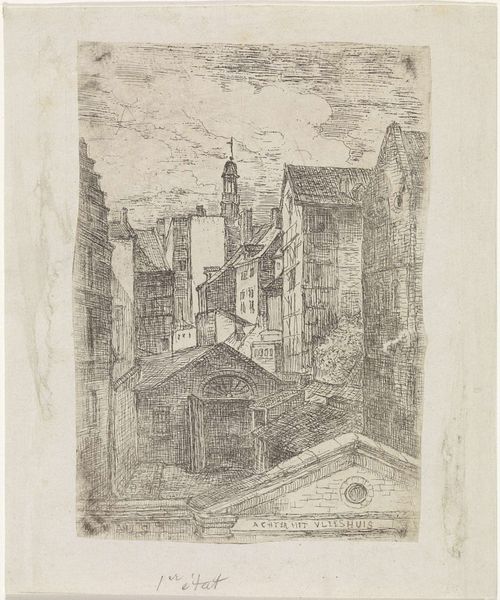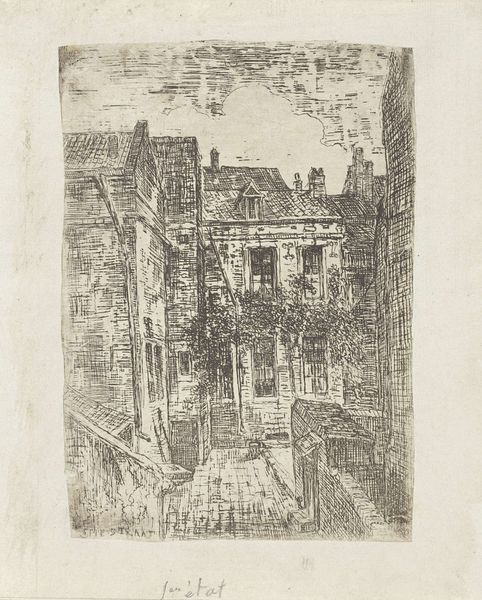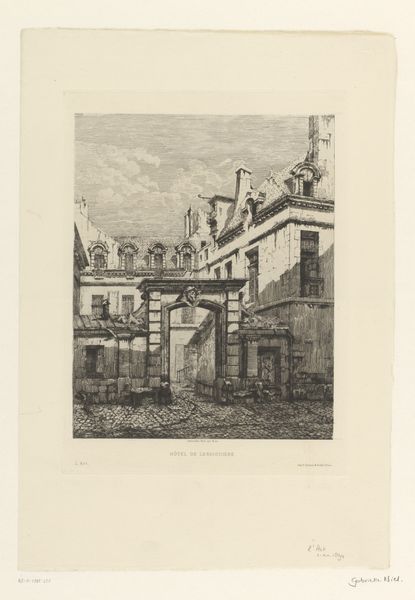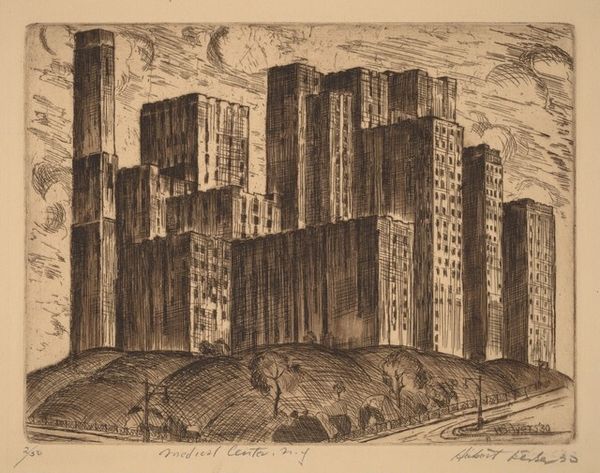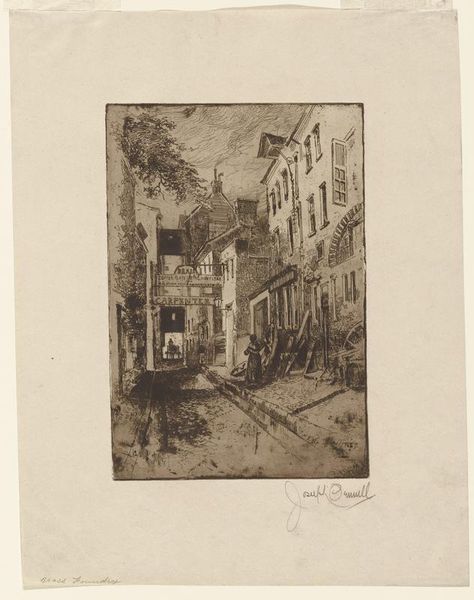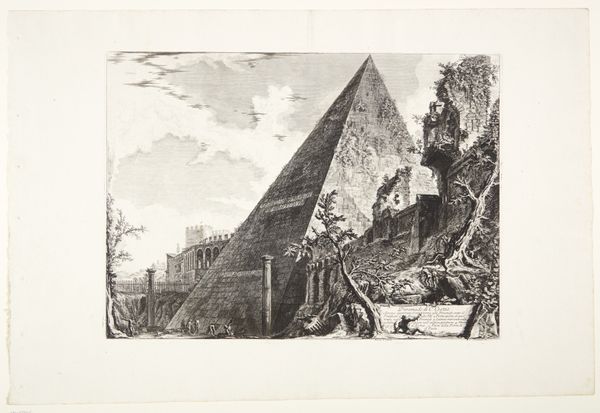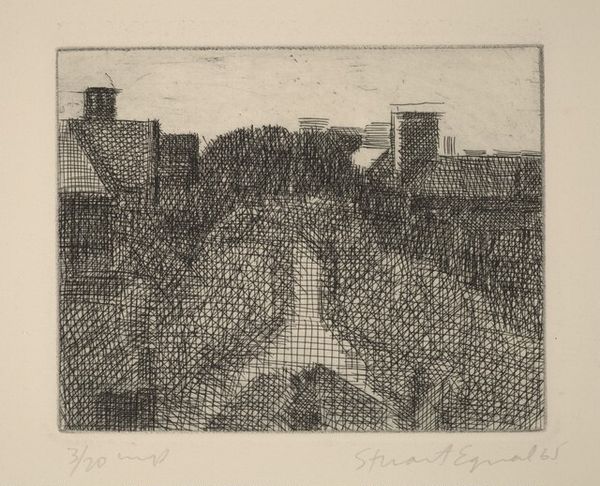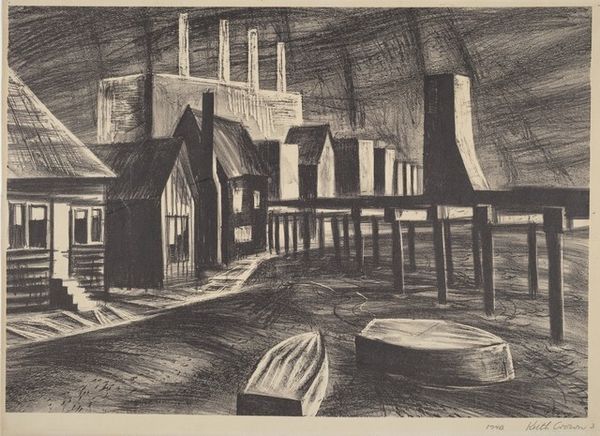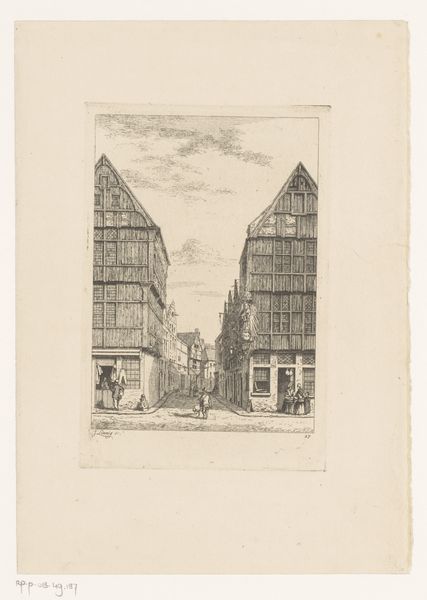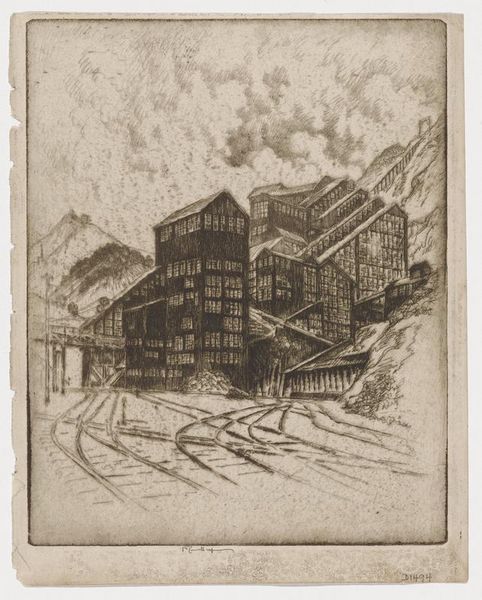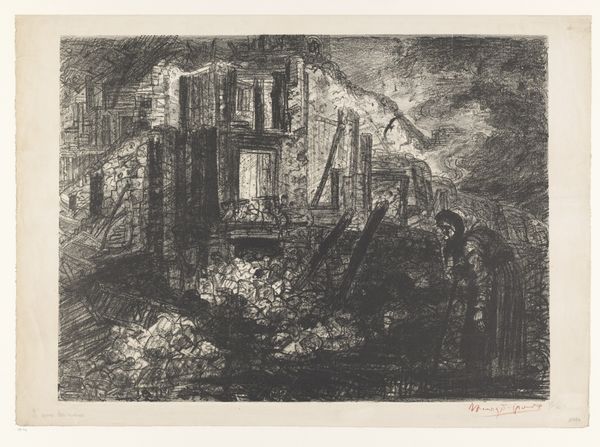
print, engraving, architecture
# print
#
old engraving style
#
pencil drawing
#
geometric
#
cityscape
#
engraving
#
architecture
Dimensions: plate: 29 x 32.8 cm (11 7/16 x 12 15/16 in.) sheet: 38 x 56 cm (14 15/16 x 22 1/16 in.)
Copyright: National Gallery of Art: CC0 1.0
Editor: We're looking at "Black Tower" by Krzysztof Skórczewski, made in 1994. It's an engraving, a print. It feels incredibly architectural but also quite unsettling – like a building collapsing in on itself, or maybe still under construction. How do you read a piece like this? Curator: It's tempting to see this as purely formal, about geometry and line. But I think it’s vital to consider the socio-political context. This was created after the fall of the Berlin Wall, a period of massive upheaval and re-imagining of urban spaces, particularly in Eastern Europe. Do you notice how the tower seems both monumental and unstable? Editor: I do, there's that looming black mass at the top but the base looks like it's crumbling, covered in scaffolding. Curator: Exactly! Think about the image of the tower throughout history— Babel, totalitarian architecture—symbols of power, often built on unstable foundations. Skórczewski seems to be asking, "What do we build *after* the collapse of old regimes? And for whom?" This could even reflect the social realities for the citizens that were promised stability and modern life and are getting something very different. What public role, then, does art play at moments like this? Editor: So, the crumbling architecture isn’t just about physical decay; it's a statement on societal instability. The medium – printmaking, which has a history of mass communication – feels significant, too. Curator: Precisely. Art in public collections isn't neutral. Its meanings evolve as cultural landscapes shift and we are forced to address different sociopolitical movements. How does this shift your perception? Editor: It definitely makes me consider how symbols of power can be presented critically rather than reverentially. It's made me think a lot more deeply about architecture as a political statement. Curator: And it hopefully emphasizes the museum’s ongoing duty to foster dialogues of sociopolitical change. We see art everywhere, but too few question its purpose or place in our daily lives.
Comments
No comments
Be the first to comment and join the conversation on the ultimate creative platform.
